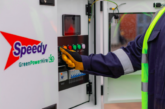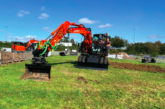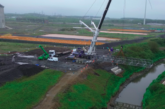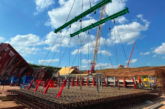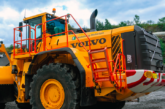At the forefront of telematics technology for more than 25 years, Teletrac Navman has released findings from its 2019 Construction Benchmark Report, unlocking valuable insights into the global construction industry.
Running annually since 2017, the report examined viewpoints from 549 individuals including over 200 UK businesses operating in the construction, mining, and oil and gas sectors, to reveal best practices, trends and current issues facing the respective industries.
Unsurprisingly, the research found that businesses’ top priorities include increasing profits (38%) and reducing operational revenue (37%), with more than a third (37%) planning to upgrade their fleet to meet these goals. In fact, more than half (55%) intend to increase their fleet size this year, with almost three quarters (68%) looking to expand their operations by purchasing new vehicles and/or equipment.
Despite the positive aspirations for growth, construction firms face a number of concerns this year. Increases in the price of building materials is heading up the worry list, with almost half (49%) citing it as a growing concern, followed by driver safety (28%) and jobsite safety (27%).
The report also unearthed that more than half (51%) of respondents find traffic congestion to be the biggest infrastructure issue and almost half (48%) say theft of equipment and tools is their greatest security concern.
Commenting on the results, Peter Millichap, UK marketing director, said: “There’s little doubt that there are a number of pressing concerns for the construction industry, driven at least partly by political uncertainty. So, in a market where margins are notoriously tight, businesses need to future-proof their operations to reduce risks like rising costs.”
The report also stressed that the construction sector is focused on attracting, retaining and developing talent, with 21% counting it as a key business challenge and more than a third (37%) using pay increases as a tactic to retain staff.
Millichap continued: “Driver and Operator shortages have been a hot topic of conversation this year throughout the industry. Steering towards the future, it’s encouraging to see businesses are not only investing in technology to increase operational efficiency and enhance performance, but also to entice a new generation of employees, ensuring future workforces have the tech know-how to enter the increasingly digital environment.”
Whilst the majority (90%) of firms already use advanced technologies like telematics – primarily to track vehicles and equipment (73%) – the report also shows that most users barely scratch the surface of its functionality, using on average only three (of 12 tested) of the features available. What’s more, although current users recognise the benefits of telematics, such as fewer incidents (51%), improved driver retention and increased customer service, only 30% can quantify a revenue impact.
The remaining 10% of non-adopters cite cost as the main reason for not implementing telematics (30%); more than a quarter (26%) don’t recognise a business need and less than a fifth (16%) don’t believe they have time to analyse the data.
Millichap concluded: “Managing everyday challenges in a competitive landscape isn’t easy, so it’s not surprising most operators in the industry are doing all they can to stay in control by adopting technology. However, it is clear some are still yet to take full advantage of the benefits of telematics and therefore don’t recognise the financial payback. For this reason, it’s encouraging that the tangible benefits have been seen by those using telematics to trace fuel consumption, with participants citing a 13% reduction in fuel consumption as a result. We hope results like these will encourage more operators to realise the true potential of telematics technology.
“Ultimately, the report will enable businesses to evaluate trends in the industry, understand what their competitors are doing and spot areas in which they should invest.”


